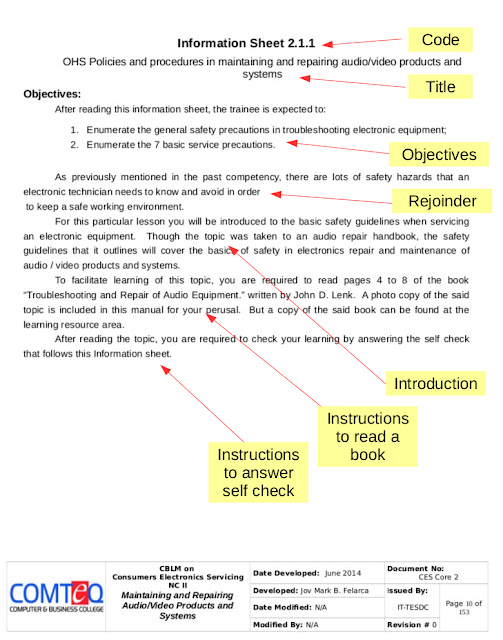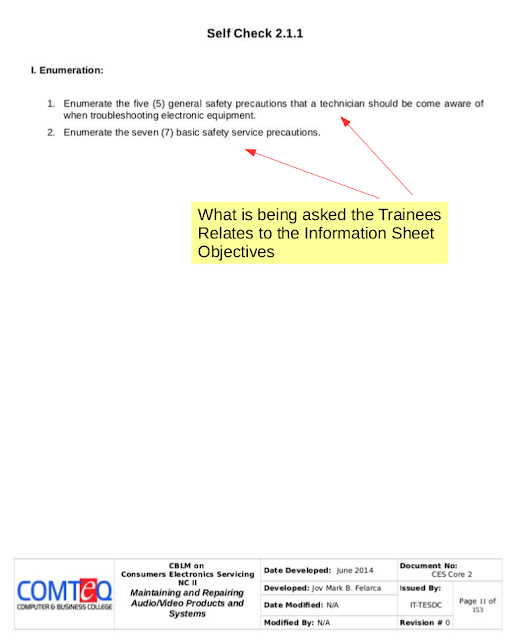Different Ways of Writing Information Sheets
How do you write an Information Sheet when what you intend to do is ask your Trainee to read a book?
Many methods can be utilized in order to write your information sheet depending on how you intend to present your lessons/topics. For this example, I've written an information sheet to inform the Trainee of what he/she should do for this training session. In this case, the trainee is required to read a reference book.
 |
| Figure 1. Sample Information Sheet |
For this particular example, the Trainee needs to read one of my available reference material to continue his/her learning session. Thus, the instructions to read the book. Notice that I had actually included the Book title, Author and the pages that needs to be read by the Trainee.
Since the trainee is required to read a topic, a self check is required so that the Trainee can practice what he/she has just read. This instruction was also included in the Information Sheet, so that the Trainee will know what he/she needs to do after reading the topic. For this example the Trainee is to answer the self check that follows. the photo copied topic that was attached to the CBLM. If for some reason the Trainee prefers to read the book itself, an instruction where the trainee can find the book was also given.
 |
| Figure 2, Sample Self Check |
Worth noting with this sample is the activities' relationship to the stated Objectives in the Information sheet, which are the expectation from the Trainees to enumerate:
- general safety precautions; and
- the seven basic precautions.
All of these can be answered only if the Trainee has read the documents as instructed in the Information Sheet. What follows after the self check is the answer key that the Trainee can use to check if he/she was able to enumerate the requirements correctly.
This way of developing an information sheet is allowed provided that, you develop the self check and that the self check is directly related to the document that you have asked your trainees to read.
A similar method can be used if what you want to do is to ask your Trainee to watch a video, view a presentation, read information form the Internet, etc.
just make sure that whatever it is that you want your Trainees to do, all the needed information is written in the information sheet so that the Trainee knows what to do to continue his/her session.
In my next topic, I will try to cover the development of an Institutional Assessment Tool that TVET Trainers are required to give before a Trainee is allowed to moved to the next competency.
Should you have more questions, feel free to comment below.
Cheers!
Thanks your topics help me a lot as a student. Do you have topic about CBLM creatimg of
ReplyDeleteJOB SHEET? GOD bless
eto po yung link para sa buong cblcm contents development. http://www.trainersmethodologyhub.com/2018/10/competency-based-learning-materials.html
ReplyDelete